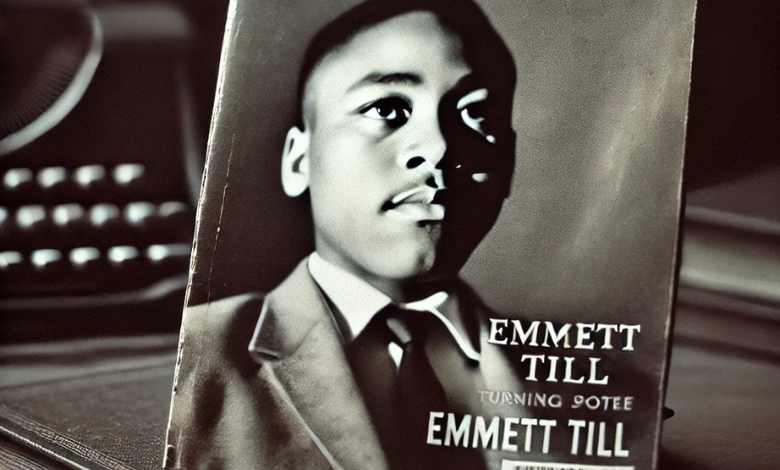Discover the story behind the Emmett Till photo in Jet Magazine, a shocking image that exposed racism and became a catalyst for change.
In 1955, a photograph published in Jet Magazine rattled the conscience of a nation. The image was of Emmett Till, a 14-year-old Black boy from Chicago, brutally murdered in Mississippi. It wasn’t just a picture; it was a catalyst for change. In an era when racial violence was often swept under the rug, this photograph exposed the raw truth, leaving America’s deeply entrenched racism bare for the world to see. Let’s dive into the story behind this photograph, why it became such a powerful symbol, and how it continues to resonate today.
What You'll Discover:
Setting the Stage: The America of the 1950s
To fully grasp the significance of Emmett Till’s photo in Jet Magazine, you need to understand the context of the 1950s. The Civil Rights Movement was still in its infancy. Segregation was legally enforced in the South, and acts of racial violence were commonplace. What made it worse was the culture of silence and impunity surrounding these atrocities.
News outlets, largely controlled by white voices, rarely covered the systemic violence against Black people. If they did, the stories were sanitized to avoid upsetting the status quo. Against this backdrop, Jet Magazine, a publication aimed at Black audiences, emerged as a vital source of unfiltered news.
The Tragic Story of Emmett Till
Emmett Till’s story began with a summer trip to Money, Mississippi. Raised in Chicago, Till was unfamiliar with the rigid racial codes of the Jim Crow South. On August 24, 1955, he allegedly whistled at a white woman, Carolyn Bryant, while visiting a local store. This seemingly innocent act would seal his fate.
Four days later, Till was abducted by Carolyn’s husband, Roy Bryant, and his half-brother, J.W. Milam. The men tortured and killed him, dumping his mutilated body in the Tallahatchie River. When his body was discovered, it was barely recognizable. The brutal nature of his death was meant to send a chilling message: stay in your place.
The Decision That Changed History
When Mamie Till-Mobley, Emmett’s mother, saw her son’s body, she made a decision that would change history. She insisted on an open-casket funeral, declaring, “I want the world to see what they did to my boy.”
Her courage was extraordinary. At a time when many would have been paralyzed by fear or grief, she turned her personal tragedy into a public reckoning. The decision to hold an open-casket funeral ensured that the world would confront the brutality of racial violence.
Jet Magazine: Amplifying Mamie’s Voice
Jet Magazine played a pivotal role in amplifying Mamie Till-Mobley’s decision. The magazine’s photographers captured Emmett Till’s disfigured face, publishing the image alongside detailed coverage of his funeral and the subsequent trial of his killers.
The photograph was a revelation. It defied the sanitized narratives perpetuated by mainstream media, laying bare the horrors of racial violence. For Black readers, it was a painful but necessary confrontation with the harsh realities of their existence. For white audiences, it was an uncomfortable wake-up call that shattered the illusion of a just and equal America.
The Reaction: Shockwaves Across the Nation
The publication of Emmett Till’s photo sent shockwaves across the nation. It wasn’t just the brutality of the image that resonated; it was the humanity of Emmett Till. He was a child, full of promise and potential, snuffed out by hatred.
The photo inspired outrage, sorrow, and a renewed sense of urgency among Civil Rights activists. Rosa Parks, often called the “Mother of the Civil Rights Movement,” later said that she thought of Emmett Till when she refused to give up her bus seat that December.
The Trial: A Mockery of Justice
The trial of Roy Bryant and J.W. Milam was a farce from start to finish. Despite overwhelming evidence, an all-white, all-male jury acquitted the men after deliberating for just over an hour. One juror reportedly said, “If we hadn’t stopped to drink pop, it wouldn’t have taken that long.”
The injustice was glaring, but it wasn’t surprising. What was surprising, however, was the attention the trial received, largely due to the photograph published in Jet Magazine. The image had turned Emmett Till’s death into a national conversation, forcing even those who wanted to look away to confront the truth.
Why the Photo Was So Powerful
Visuals have a unique power to cut through the noise. While words can describe events, photographs make them real. Emmett Till’s photo did more than document his death; it humanized the cost of racism. It was impossible to look at that image and remain indifferent.
The decision to publish such a graphic photo was not without controversy. Some criticized Jet Magazine for exploiting Emmett’s death, but history has vindicated the publication. The photograph wasn’t just news; it was a call to action.
The Legacy of Emmett Till’s Photo
The photo of Emmett Till in Jet Magazine became a touchstone for the Civil Rights Movement. It inspired protests, galvanized leaders, and laid the groundwork for landmark changes like the Civil Rights Act of 1964. But its impact goes beyond legislative achievements. It serves as a haunting reminder of what happens when hatred goes unchecked.
Even today, the photo continues to resonate. It’s studied in classrooms, discussed in documentaries, and referenced in modern movements for racial justice. It’s a reminder that the fight against racism is far from over and that courage—like Mamie Till-Mobley’s—can spark change.
Relatable Lessons from Emmett Till’s Story
Emmett Till’s story is deeply personal, but it carries universal lessons. For one, it shows the power of ordinary people to make extraordinary impacts. Mamie Till-Mobley wasn’t a politician or a public figure; she was a grieving mother. Yet her decision to share her son’s story changed the course of history.
It also underscores the importance of confronting uncomfortable truths. As humans, we often avoid what makes us uncomfortable, but real change requires us to face those truths head-on. Emmett Till’s photo forced a nation to do just that.
Key Takings
- The photograph of Emmett Till in Jet Magazine served as more than an image; it was a mirror exposing systemic racism and violence in America.
- It challenged the nation to uphold its ideals of equality and justice.
- This moment in history highlights the importance of bearing witness to injustice.
- Journalism, activism, and personal courage play vital roles in shining a light on wrongdoing.
- Emmett Till’s story remains a painful yet essential reminder of the need for change.





